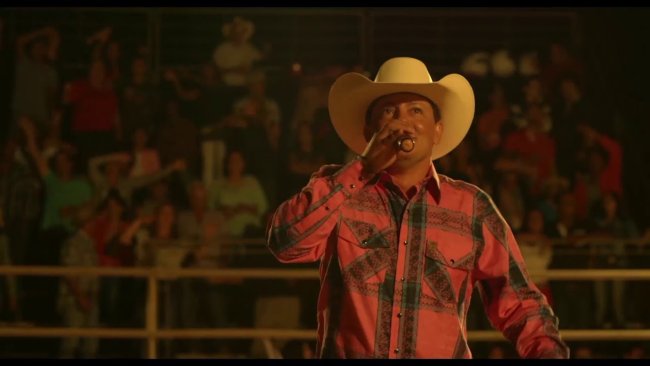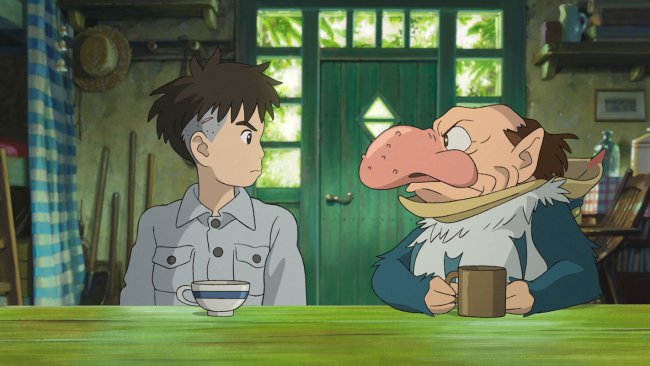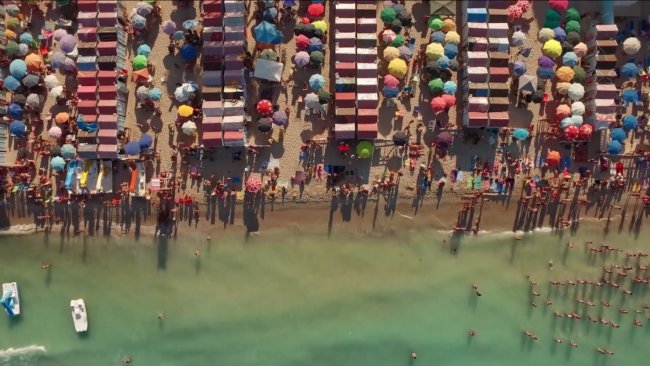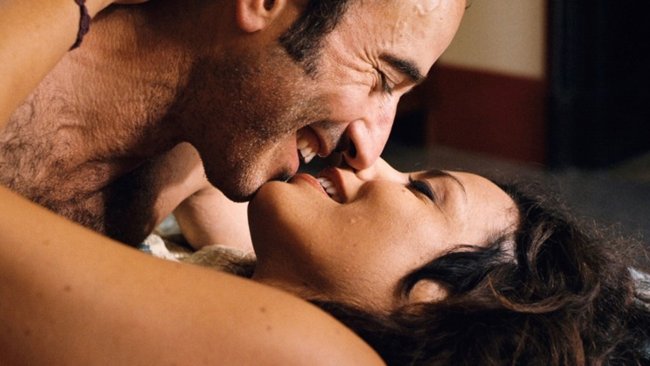The Island
[…] As such, the film points out how modern enslavement has more subtle ways these days; giving some people nothing makes them wish for little, with those who don't prosecute others becoming saviors. Along the way, the narrative will often – and discreetly – outsmart the state of affairs.
[…] Visualisation goes way beyond narration, creating a virtuoso show of colors out of its every moment; spectacular, but hollow.
Text: Călin Boto
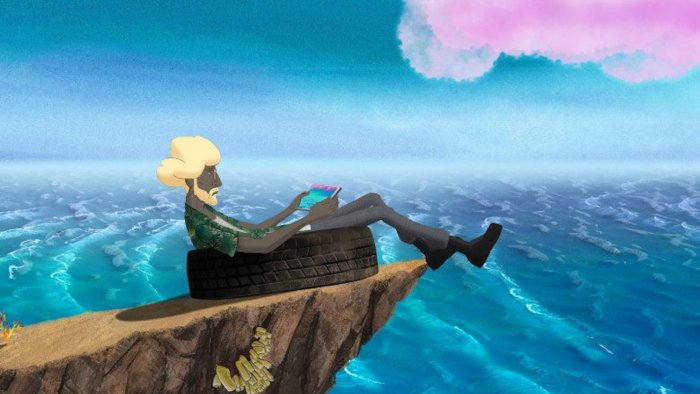
More is a Bore
Seen from its hometown, Anca Damian's latest film has the cultural allure of an edgy bravado, for nothing else could come out of an animated musical of witticisms led by national folk anti-star Ada Milea and violinist Alexander Balanescu, based on their previous stage adaptations of cult-writer Gellu Naum's play The Island, and, with such means and sources – including, of course, Daniel Defoe's Robinson Crusoe – the one and only Romanian animator who still manages to release feature films crafts an outcry over the world's wicked state of affairs.
Nowadays, Robinson is a secluded doctor with the looks of a hipster, literally singing his longing for the commodities of a past social life. What surrounds him is an industrial wasteland with tropical leftovers, where life and death feed from each other. Twisted by Damian's surreal sensitivity, this landscape unveils itself in great, bizarre detail. Luckily, Crusoe has a digital tablet as a third eye, using it to make sense of what's around. Through its ideal looking-glass, we see a Hokusai wave eating a refugee boat along with all its human lives. All but one: Friday, whom Crusoe won't enslave this time, but befriend. Even so, the newcomer – albino-looking, as all refugees will appear towards the film – shows a great deal of gratitude, i.e., submissiveness, for being ambiguously "saved" with no more than water and a piece of bread. As such, the film points out how modern enslavement has more subtle ways these days; giving some people nothing makes them wish for little, with those who don't prosecute others becoming saviors. Along the way, the narrative will often – and discreetly – outsmart the state of affairs.
As many readings of Crusoe did, but by making a film, Damian, like any other, should give life to ideas and vice versa. Her ideas are lively, but so chaotically lived by its characters that only good intentions remain. After meeting Friday, the narrative seems to collapse. Robinson goes on a three-year trip with some mother-of-them-all and her pirate lover to find a hiding place for their forbidden love; through the Tower of Babel, towards Paradise. This is the end of sense – and it is endless. In the meantime, Friday is supposed to take good care of their place on the island and naively does so until he politically awakens by becoming the leader of a resistance group of refugees, etc. Damian is on the move, by no means slowly; such a rush, however, gives no adrenaline. Watching her crafty mumbo-jumbo becoming a complex artistic fiasco and a political nothing gives a sense of unease – «let's destroy the history with a little mystery», as Milea joyfully sings.
It feels like a loss though, for The Island is more harmonious in its visuals than Damian's previous Marona's Fantastic Tale, contrary to its freewheeling narrative. Often, when she abandons profilmic reality – because she directed documentaries and fictions as well – her work is that of a bricoleur, an amalgamation of pastels, cartoons, collages, art history quotes, simple shapes and fluid lines. Here as well, visualisation goes way beyond narration, creating a virtuoso show of colors out of its every moment; spectacular, but hollow, yet now she finds a center to the visual tapestry, even a motif; or that's what I see in the "space blankets" – those sparkling golden thermal foils designed to help the body overcome and survive low temperatures. A few years ago, during the European migrant crisis, these cosmic items didn't have to leave Earth anymore, for their use became more immediate here: surviving other space. A sea of golden foil, clothes, uniforms, fishing nets… Damian knows how to empower an image.
And sound? It goes well at first, with introductory off-screen songs, violin most of the time, and each character singing its lines. However, this "gypsy" music, as one reviewer from Cineuropa otherworldly put it, no matter how speedy and jolly, becomes tiresome and distracting, and the lyrics aren't of any help – «A: I changed my mind suddenly. I go to the sea / B: What about me? / A: You cannot come with me. I have to be free. »
To free the image. That's what Damian should do.
This article contains a third-party video. If you would like to watch the video, please adjust your settings.
Watch
Screenings at the Festival Fantoche Baden 2022
Info
The Island | Film | Anca Damian | ROM-BE-FR 2021 | 85’ | Black Movie Genève 2022
First published: February 02, 2022
